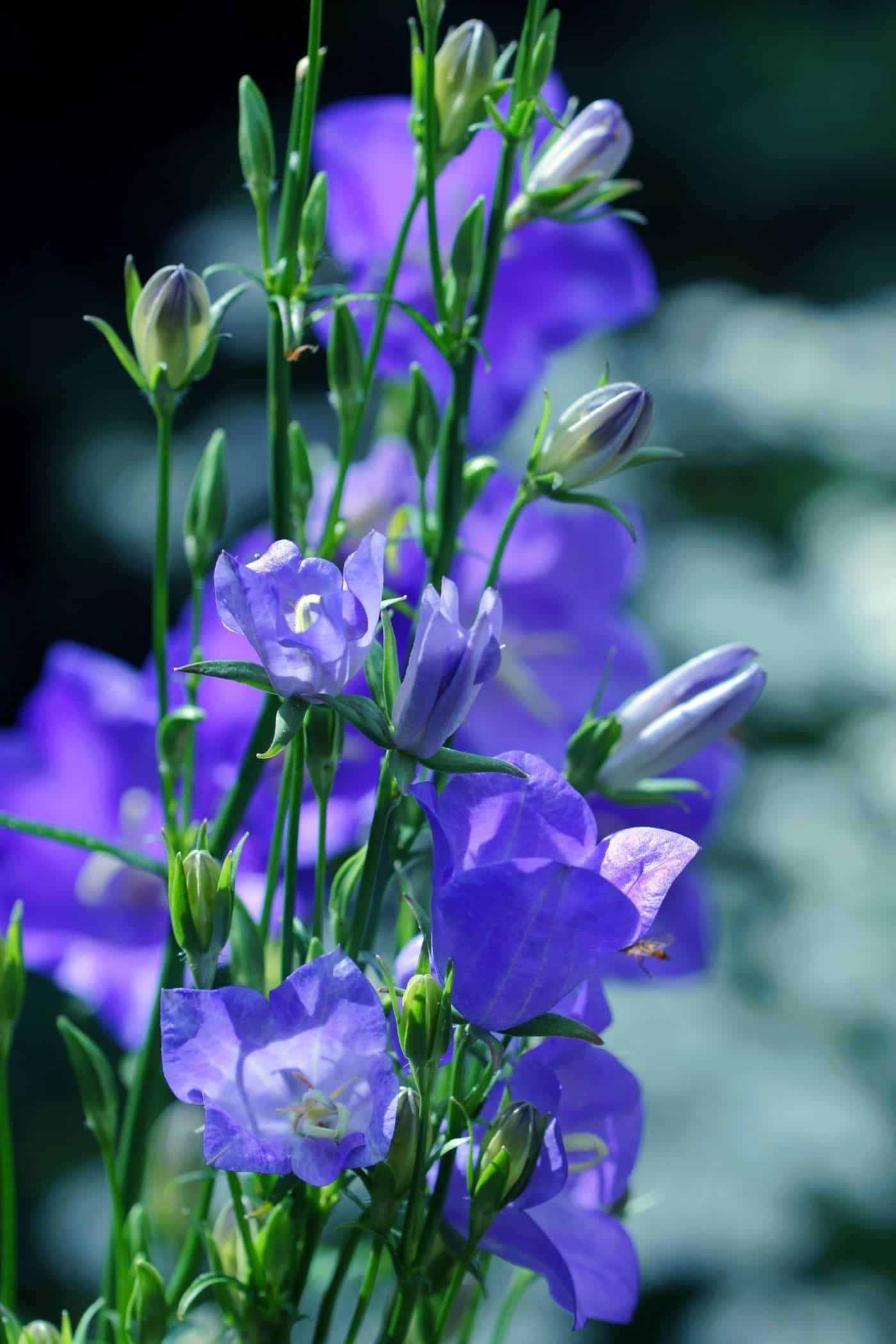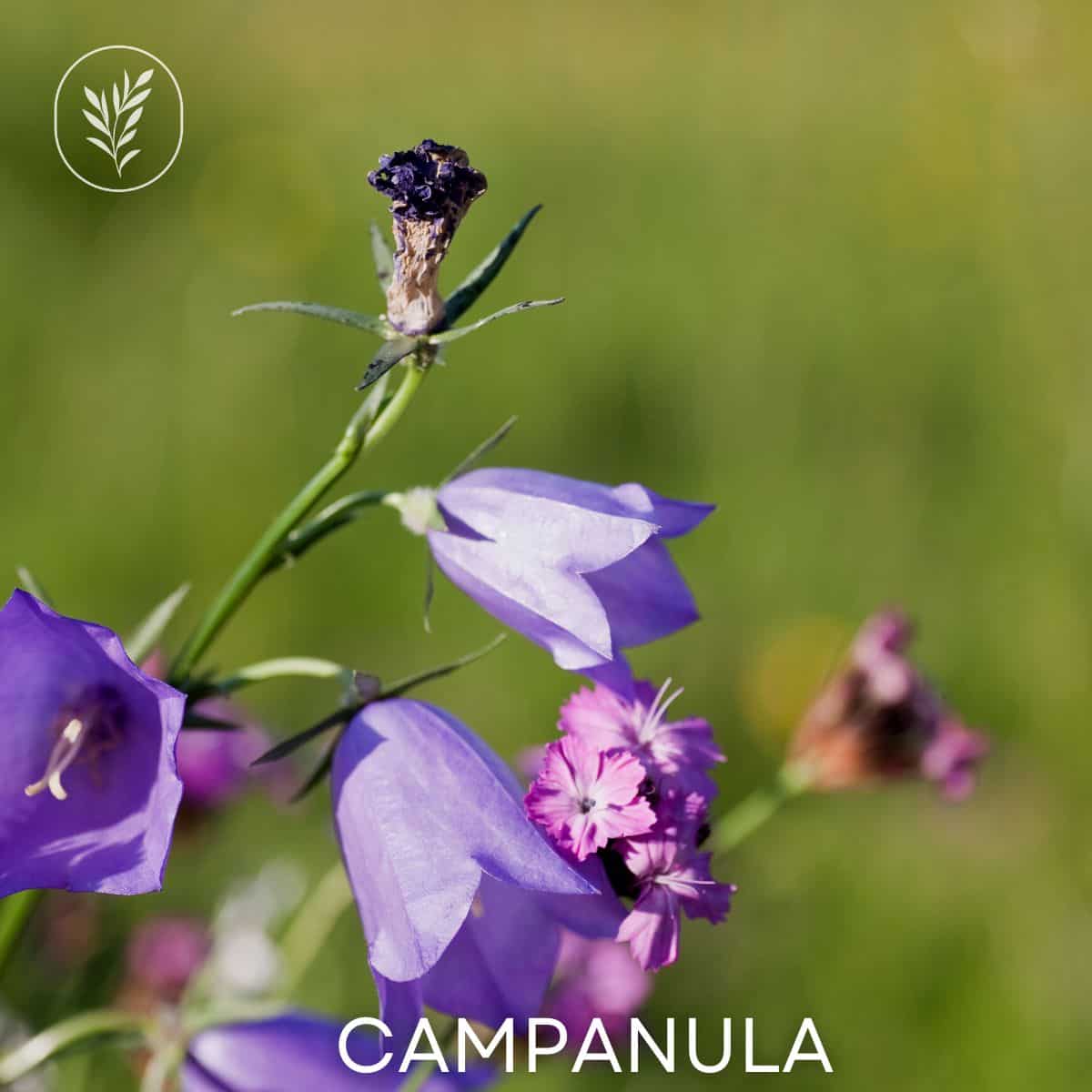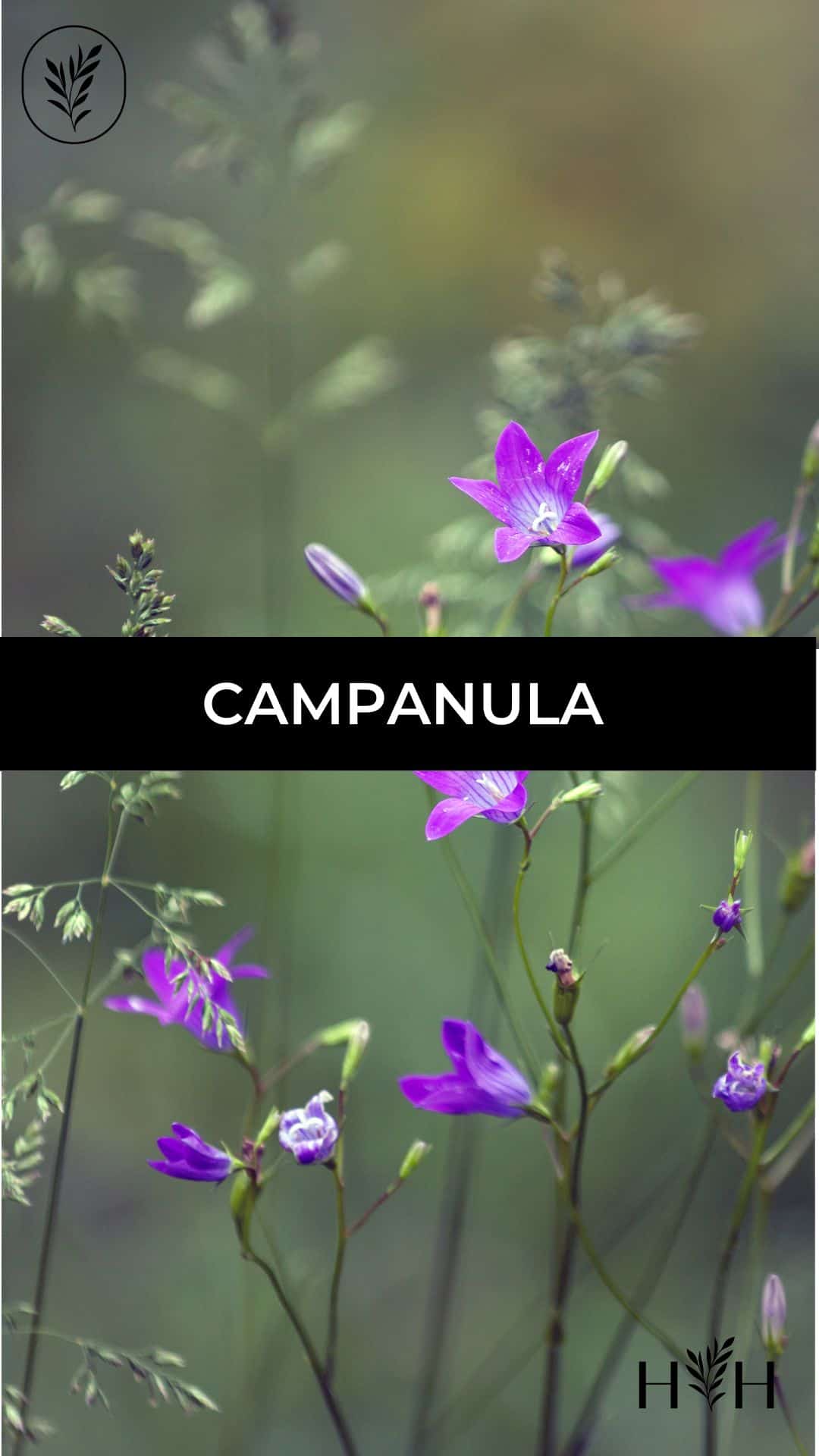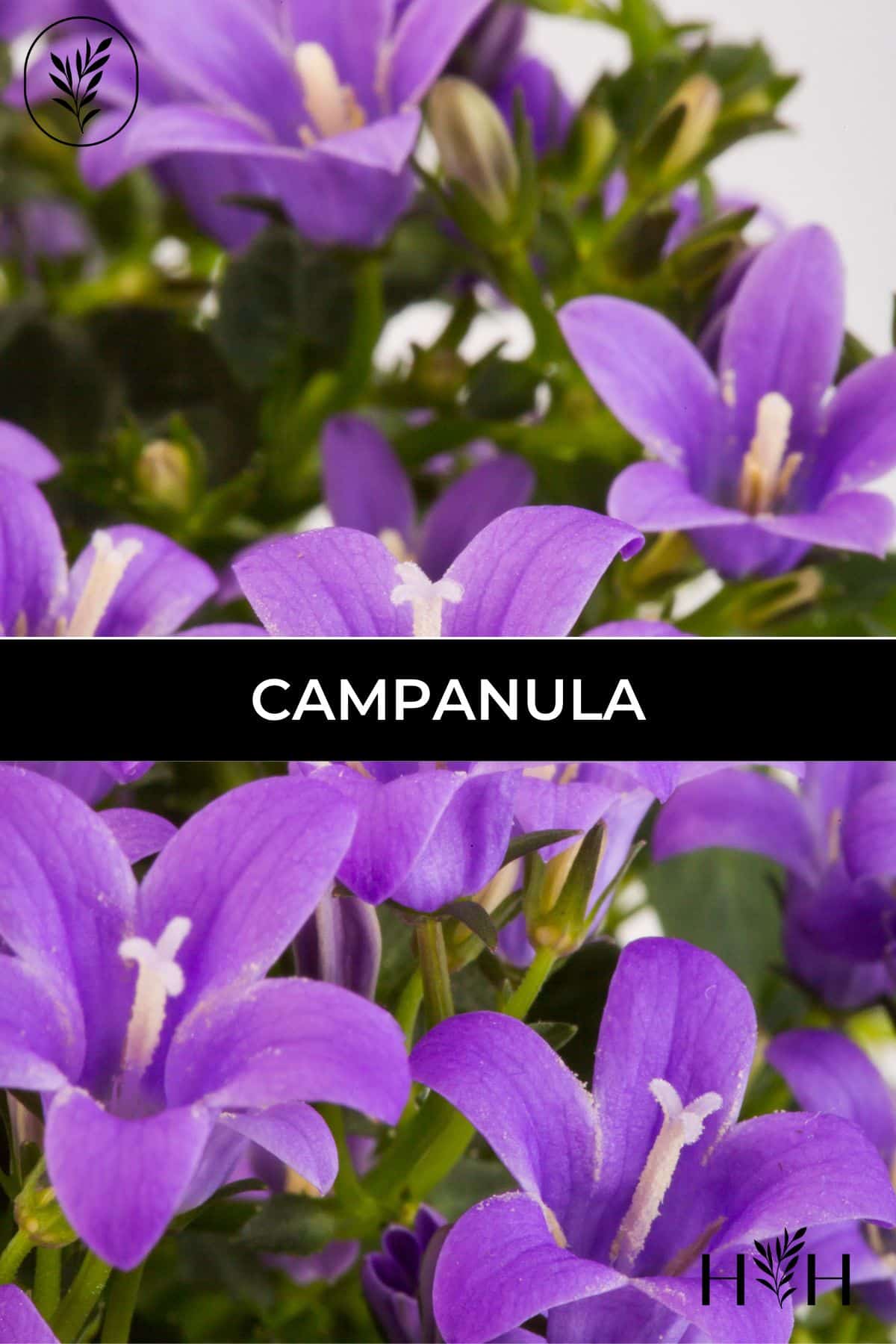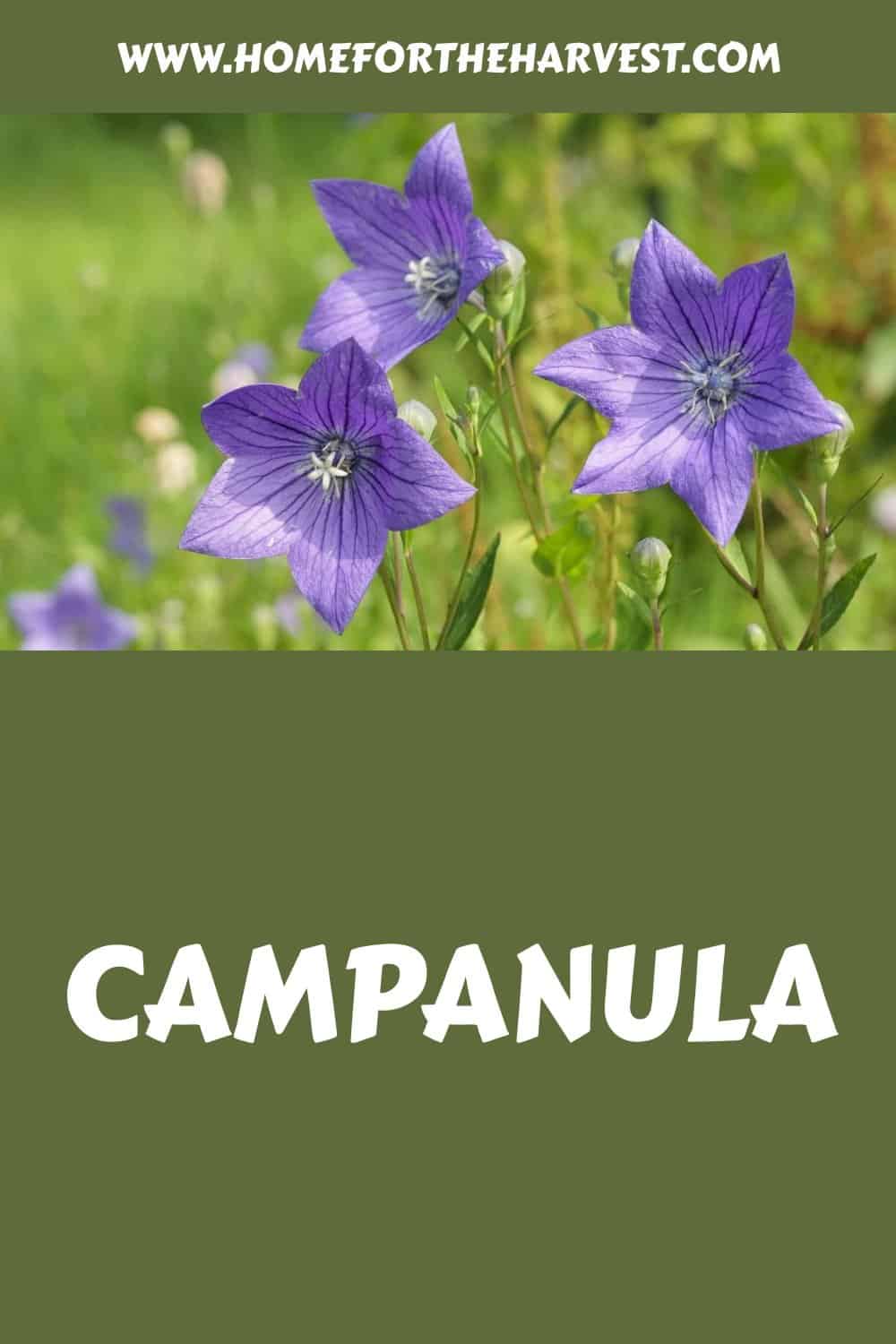Looking for old-fashioned, dainty perennial flowers? What about something low-maintenance that blooms reliably all summer? Look no further than campanula.
Campanula is a group of flowering plants with bell-shaped blue, purple, or white flowers. There are hundreds of species of campanula, many of which are commonly called Bellflowers. Most campanula species are low-maintenance perennials that grow best in sunny locations and well-drained soil.
There truly is a campanula for every garden! Read on to learn all about this wonderful flower, including how to grow campanula and which species best suits your garden.
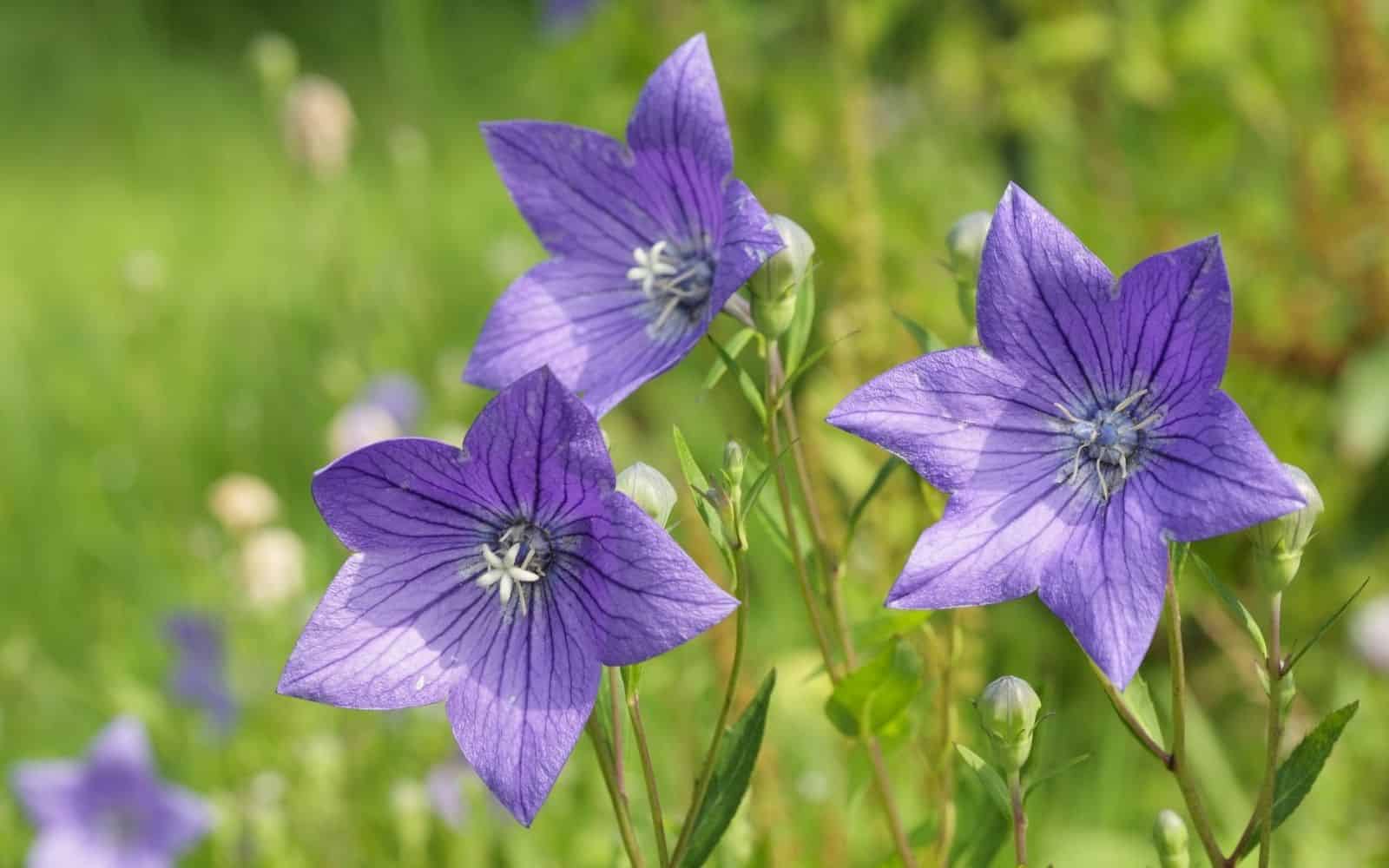
When to plant campanula?
Perennial campanula species are best planted in early autumn or early spring. Most types are hardy in colder areas, but there are some exceptions, so be sure to check the exact species before planting in cooler climates. Potted campanula plants are readily available at garden centers in the spring for transplanting out into the garden.
Campanula seeds can be sown indoors in late winter/early spring in colder climates to give them a head-start in the springtime. The seeds may take 2-3 weeks to germinate. Campanula seedlings should not be planted outdoors until all danger of frost has passed. Take care to harden off tender seedlings for several weeks before transplanting them outside.
“Bellflowers grow readily from seed sown indoors in late winter or outdoors in the spring. (Don’t cover the seed, since many species need light to germinate.)”
Perennials for Every Purpose: Choose the Right Plants for Your Conditions, Your Garden, and Your Taste (A Rodale Organic Gardening Book), by Larry Hodgson
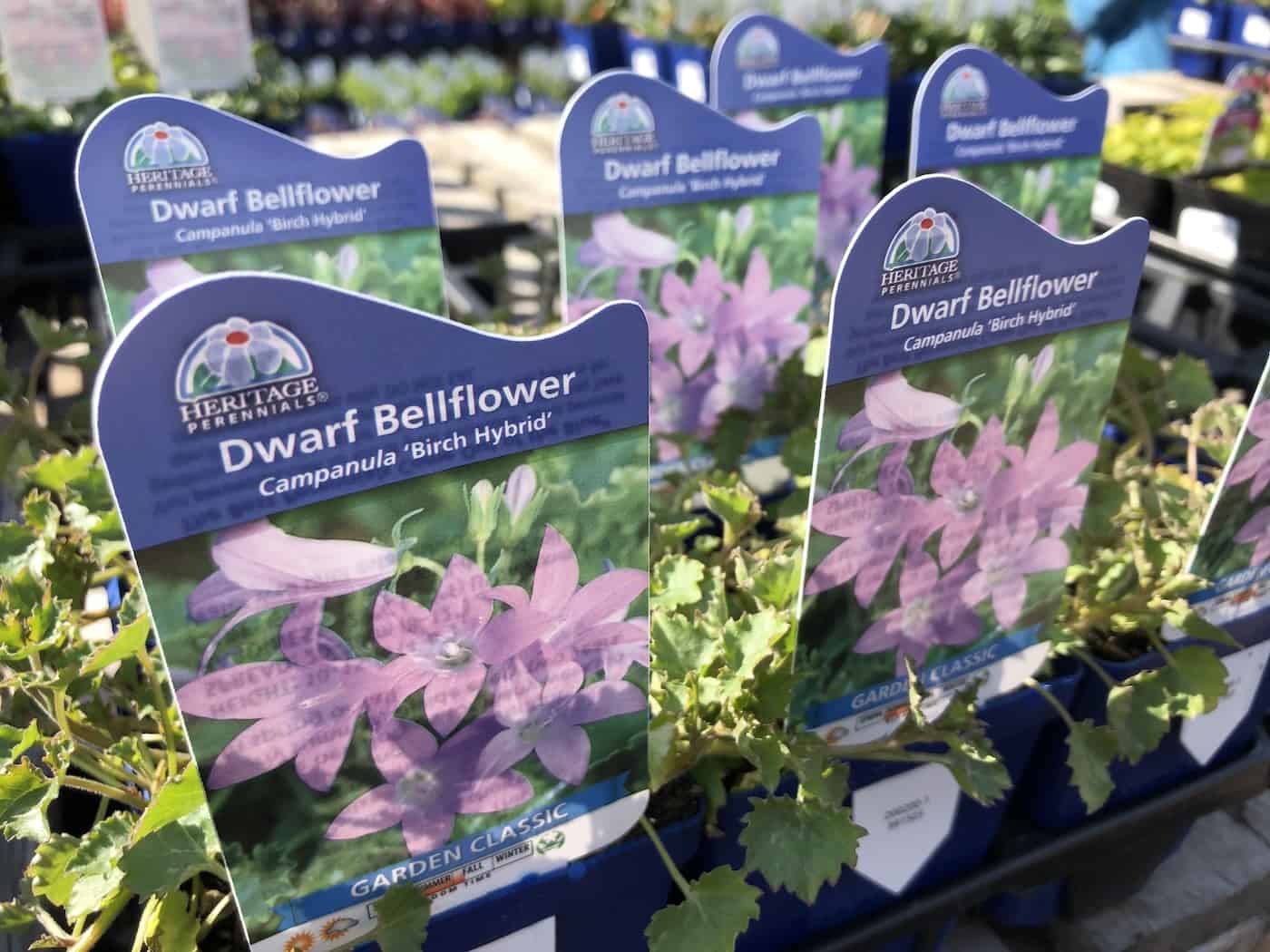
Where to plant campanula?
Campanula should be planted in a full-sun location (more than 6 hours of direct sunlight daily). Campanula planted in full sun tend to flower much more vigorously than if shaded. That said, these plants may appreciate some afternoon shade in the hottest climates.
Many cultivated perennial campanula species are perennial in Zones 5-9, although there are some variations (see species section, below). Campanula is deer-resistant, yet attract both hummingbirds and butterflies to your yard.
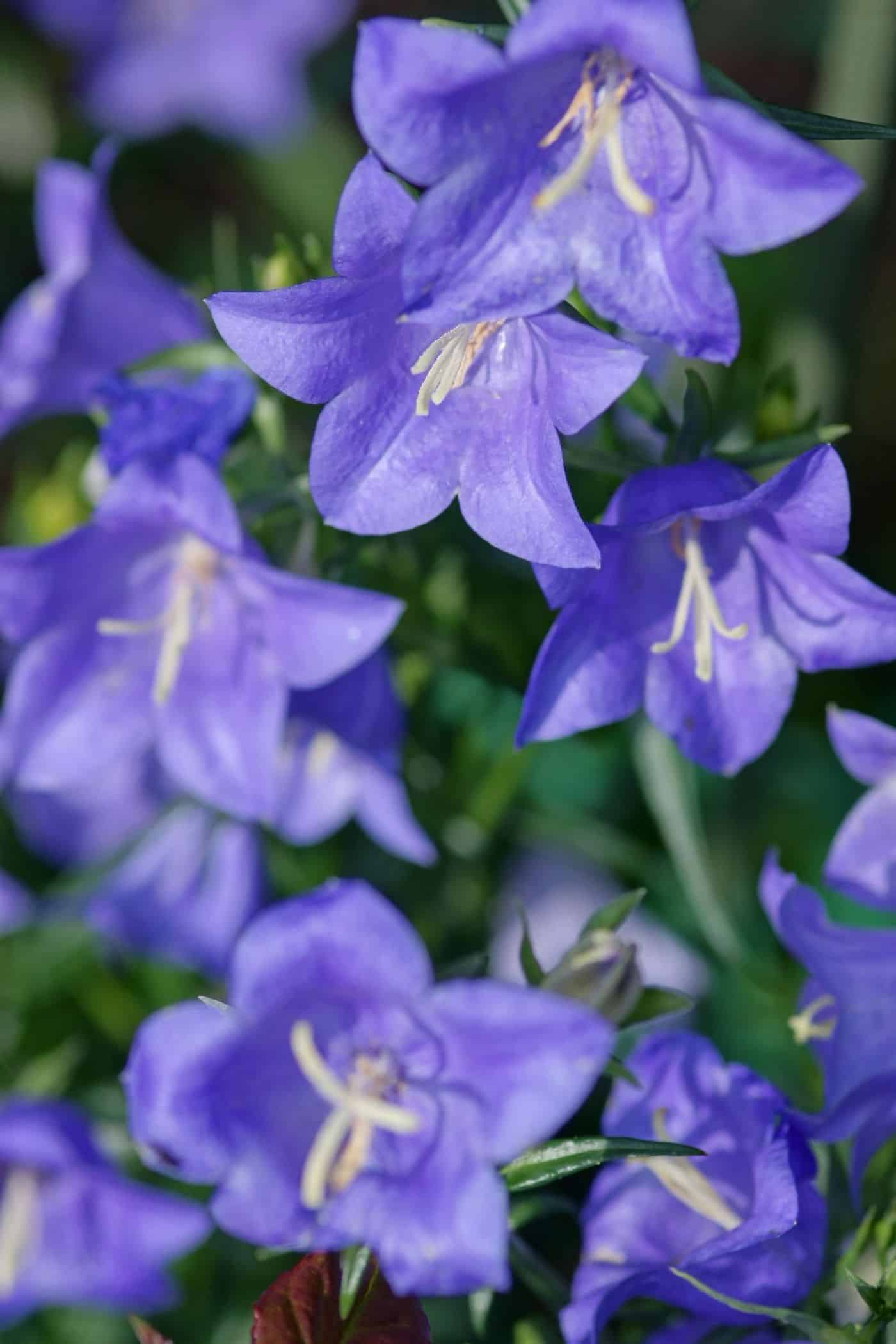
How to grow campanula?
Growing campanula mainly requires keeping the soil somewhat moist. These plants do not like their roots to dry out but are also somewhat intolerant of standing water. They like moisture in the soil, but not wet muddy puddles of standing water.
Campanula grows and flower best when they receive lots of sunlight. That said, in hot climates, they will benefit from some afternoon shade to keep them cool. In optimal conditions, these perennials should flower from late spring until early autumn. Fertilize the plants with a top-dressing of 1″ of homemade compost, or with a high-quality organic fertilizer.
“Bellflowers are generally easy to grow and long-lived. They perform best in cool-summer areas, although partial shade and a deep organic mulch can help them bloom almost as well where summers are warm”
Perennials for Every Purpose: Choose the Right Plants for Your Conditions, Your Garden, and Your Taste (A Rodale Organic Gardening Book), by Larry Hodgson
How to deadhead campanula?
While time-consuming, deadheading campanula plants does lead to repeat blooming and thus a longer flowering season. Groundcover campanula is rarely deadheaded, but the trailing ornamental types and the upright species are commonly deadheaded to encourage more flowers. Use pruning shears or fine floral snips to remove each individual flower, making way for future blooms to appear!
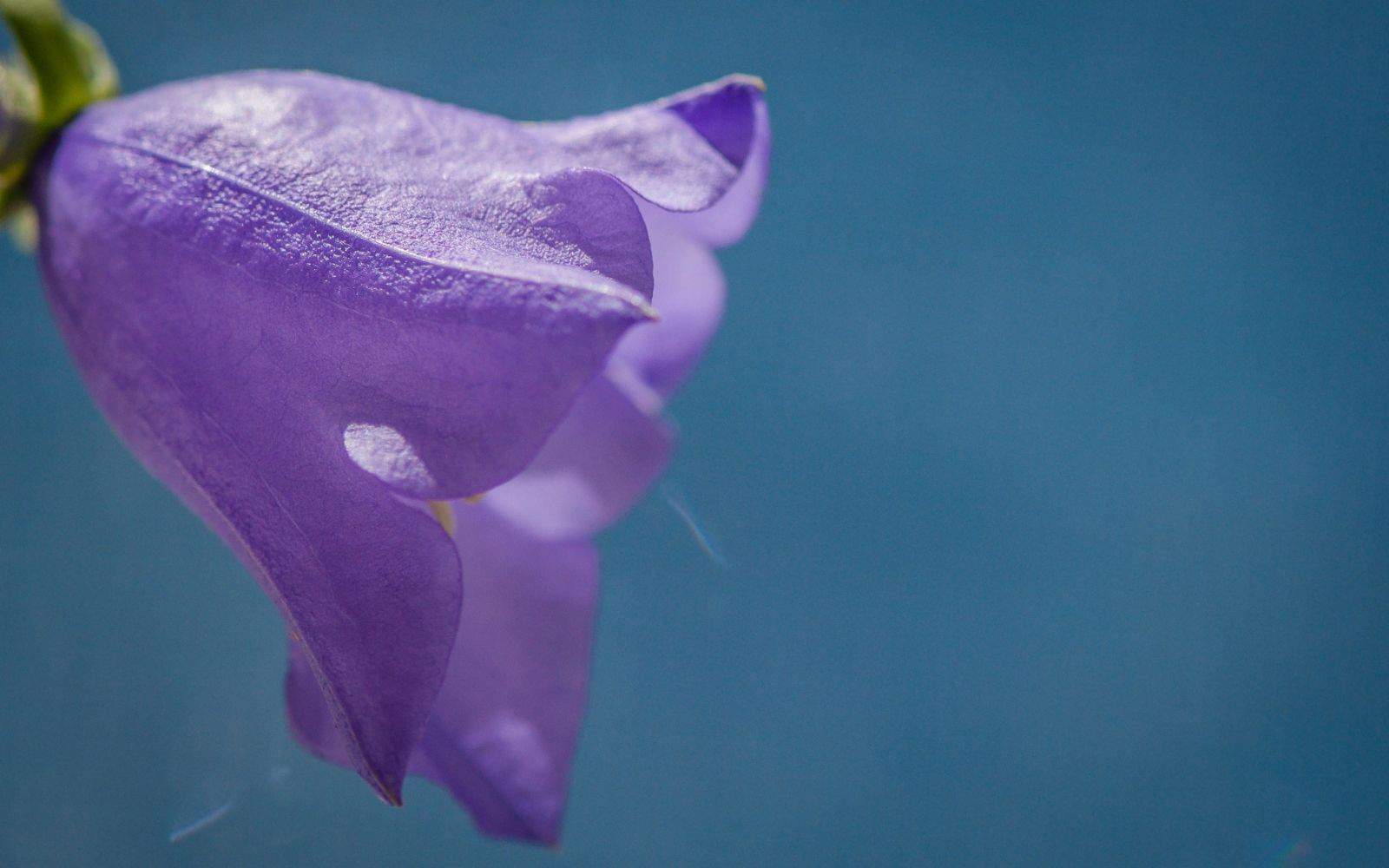
Campanula species
While there are hundreds of species of Campanula, there are a few stand-out varieties that have become favorites of gardeners across the world. Here are some wonderful types of Campanula to grow, starting from the dwarf and groundcover types and moving toward the upright species.
Fairy Thimbles (Campanula cochlearifolia)
Fairy Thimbles (Campanula cochlearifolia) is a creeping herbaceous perennial with delicate bell-shaped hanging purple flowers. This clumping dwarf bellflower is native to the European Alps.
Fairy Thimbles are long-blooming and easy to grow, although they are not as shade-tolerant or as tolerant of cool-season moisture as some other bellflowers. This alpine perennial is hardy in Zones 6-9. Fairy Thimbles are an RHS Award of Garden Merit ornamental plant and are often featured in woodland gardens.
Here are some popular cultivars of Campanula cochlearifolia:
- ‘Elizabeth Oliver’
- ‘Bavarian Blue’
- ‘Blue Baby’
Italian Bellflower (Campanula isophylla)
Italian Bellflower (Campanula isophylla), also called Star of Bethlehem or Falling Stars, is a trailing perennial with small starry flowers. This tender species of campanula from Italy is grown as an annual in colder regions of the world.
Italian Bellflower is easy to grow if the soil consistently moist, but not wet or muddy. Hardy to Zone 7, this plant blooms continuously during summertime and into autumn, with the flowers often covering a majority of the foliage. For this reason, Italian Bellflower is most often used in hanging baskets or trailing over stone garden walls.
Here are some popular cultivars of Campanula isophylla:
- ‘Mayi’
- ‘Napoli’
- ‘Atlanta White’
Dalmatian Bellflower (Campanula portenschlagiana)
Dalmatian Bellflower (Campanula portenschlagiana) is a trailing perennial that produces masses of purple flowers. This low-growing species is native to the Dalmation Mountains in Croatia, and is hardy in zones 4-9.
Dalmatian Bellflower is a low-maintenance, reliable bloomer. While the plant grows only about 6″ high, it is also called the “Wall Bellflower” due to its beauty when grown down a European-style stone or brick wall. It can also be used as a trailing plant in container gardens, rock gardens, or as a flowering groundcover between flagstones.
Here are some popular cultivars of Campanula portenschlagiana:
- ‘Catharina’
- ‘Ambella Blue’
- ‘Resholdt Variety’
Serbian Bellflower (Campanula poscharskyana)
Serbian Bellflower (Campanula poscharskyana) is a trailing species with pale blue-purple, star-shaped open flowers. This low-growing perennial is native to the Dinaric Alps in Southeastern Europe, and is hardy in zones 4-9.
Serbian Bellflower is easy to grow and quickly spreads via runners. It can be used as a flowering groundcover, shorter edge plant for border gardens, or in containers or rock gardens.
Here are some popular cultivars of Campanula poscharskyana:
- ‘Stella’
- ‘Blue Waterfall’
- ‘Blue Gown’
- ‘E.H. Frost’
- ‘Multiplicity’
Adriatic Bellflower (Campanula garganica)
Adriatic Bellflower (Campanula garganica) is a low-growing, clumping perennial with masses of light blue-violet flowers. This flowering ground cover is native to Italy.
Adriatic Bellflower is long-blooming and easy to grow in hardiness zones 5-9. This perennial is most often used as a low-maintenance flowering ground cover.
Here are some popular cultivars of Campanula garganica:
- ‘Dickson’s Gold’
- ‘Filigree’
- ‘Mrs. Resholt’
- ‘Major’
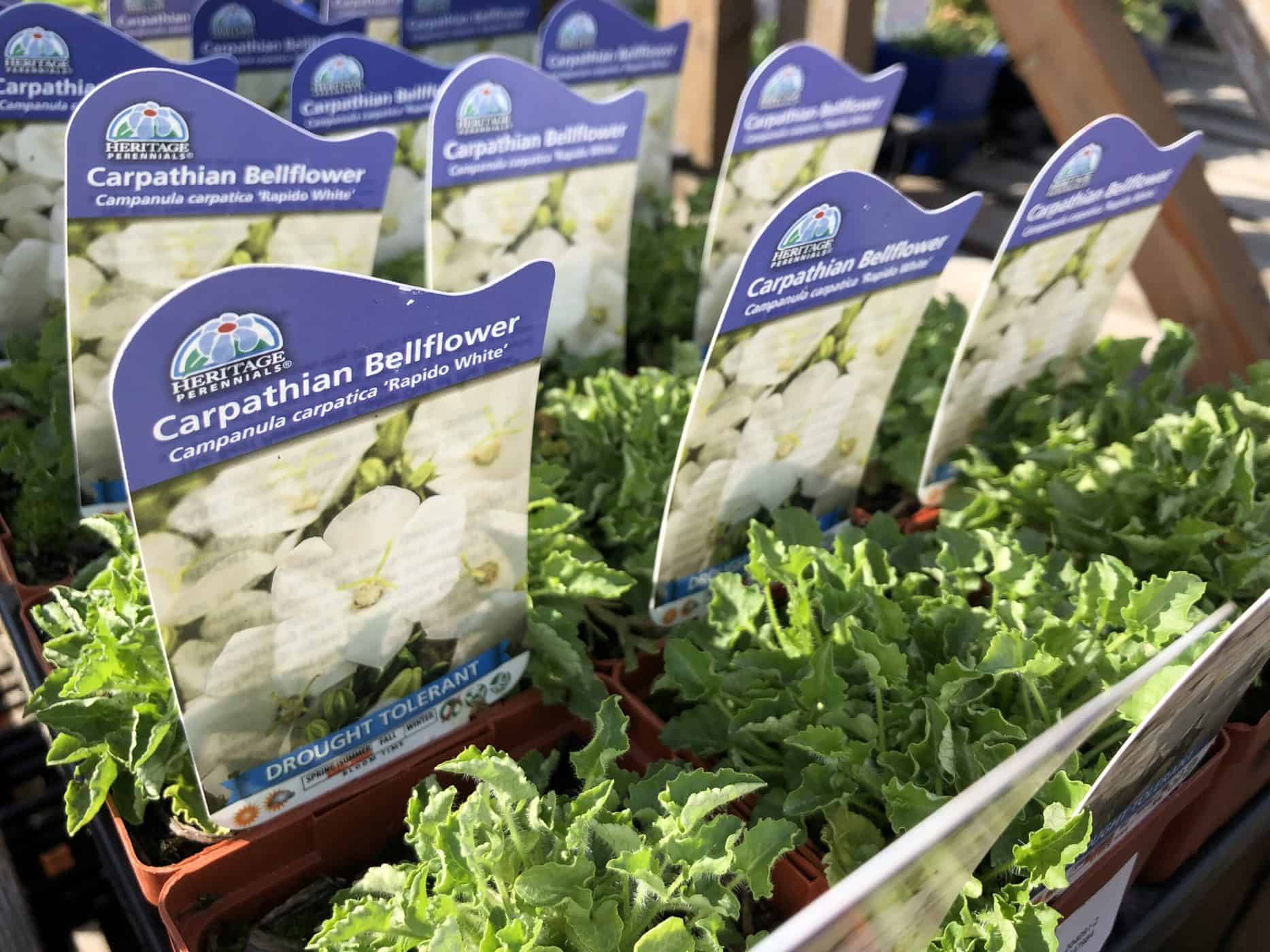
Carpathian Bellflower (Campanula carpatica)
Carpathian Bellflower (Campanula carpatica) is a low-growing perennial with pale blue or white cup-shaped flowers that face upwards. This short perennial flower is native to the Carpathian Mountain Range in Central-Eastern Europe.
Carpathian Bellflower is typically easy to grow and does best in full sun locations in plant hardiness zones 3-9. It is most often used as a flowering groundcover, edging plant, or as a “filler” in a container garden.
Here are some popular cultivars of Campanula carpatica:
- ‘Blue Clips’
- ‘White Clips’
- ‘Rapido Blue’
- ‘Rapido White’
- ‘Pearl White’
- ‘Blue Moonlight’
- ‘Chewton Joy’
Bluebells of Scotland (Campanula rotundifolia)
Bluebells of Scotland (Campanula rotundifolia) is a low-growing perennial alpine bellflower that produces dainty purple-blue hanging flowers on thin, wiry stems. Native to Europe, this is a hardy plant that can grow in nutrient-deficient conditions as long as moisture and sunlight are present.
This perennial is easy to grow (Zones 3-7) and is best planted where the thin stalks can dance in a light breeze while being protected from strong gusts of wind (they tend to blow right over). They are perfect for cottage gardens, flower meadows, and woodland gardens.
Here are some popular cultivars of Campanula rotundifolia:
- ‘Thumbell Blue’
- ‘White Gem’
- ‘Alba’
- ‘Olympica’
Clustered Bellflower (Campanula glomerata)
Clustered Bellflower (Campanula glomerata) is a unique perennial with clusters of upward-facing purple tulip-like flowers. This 2′-3′ height border garden favorite is native to Europe and Asia.
Clustered Bellflower has a long blooming period from late spring into summertime. Hardy in Zones 3-9, this perennial is typically planted in full sun but may prefer partial shade in hot areas. Clustered Bellflower is most often used in perennial flower beds, cottage gardens, and as a cut flower.
Here are some popular cultivars of Campanula glomerata:
- ‘Caroline’
- ‘Freya’
- ‘Nana’
- ‘Purple Pixie’
- ‘Emerald’
- ‘Superba’
- ‘Genti Blue’
Peach Leaf Bellflower (Campanula persicifolia)
Peach Leaf Bellflower (Campanula persicifolia) is an elegant, medium-height perennial with purple or white flowers native to Europe/Asia. Generally reaching 2 or 3 feet, the dainty flowers are perched on showy stems, with fine skinny foliage reminiscent of mini peach leaves.
Peach-Leaved Bellflower is low-maintenance, easy to grow, and readily self-seeds. This perennial is hardy in zones 4-9, and prefers moist, well-draining soil.
Here are some popular cultivars of Campanula persicifolia:
- ‘Telham Beauty’
- ‘Boule de Neige’
- ‘Takion White’
- ‘Takion Blue’
- ‘Chettle Charm’
- ‘Fleur de Neige’
Milky Bellflower (Campanula lactiflora)
Milky Bellflower (Campanula lactiflora) is a stately, upright perennial with creamy-blue open bell-shaped flowers. Reaching 3′-5′ high, this species is much taller than other bellflowers and is often featured in cottage and border gardens.
Campanula lactiflora is a low-maintenance perennial that needs little care beyond consistent watering during hot spells. Milky Bellflower thrives in plant hardiness zones 5-9 and is a perfect taller perennial for the back of a border garden.
Here are some popular cultivars of Campanula lactiflora:
- ‘Loddon Anna’
- ‘Avalanche’
- ‘Macrantha’
- ‘Prichard’s Variety’
“Milky bellflower definitely prefers constant moisture (but not waterlogged soil), and partial shade is a must in hot-summer areas.”
Perennials for Every Purpose: Choose the Right Plants for Your Conditions, Your Garden, and Your Taste (A Rodale Organic Gardening Book), by Larry Hodgson
